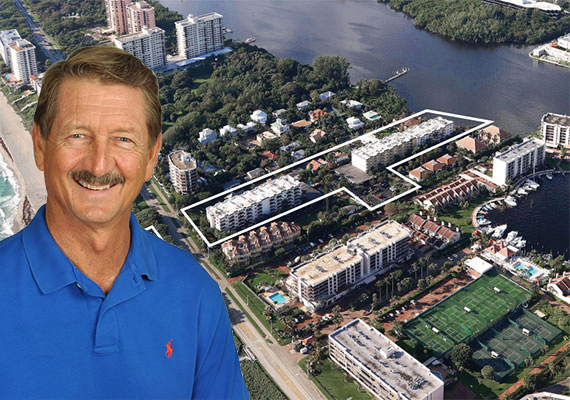Trending
South Florida moving toward real estate bubble: Anderson & Carr’s Banting

South Florida is headed toward a real estate bubble, but we’re not there yet, said Robert Banting, president of appraising firm Anderson & Carr in West Palm Beach.
“But it’s just a matter of time before the next [real estate] recession,” he said at a luncheon of the Economic Forum of Palm Beach County in West Palm Beach on Wednesday. He said he sees the peak for commercial real estate coming in 2020-2021.
That’s because the value of commercial properties has been rising about 4 percent annually for years. But right now, values are only equal to their peaks of 10 years ago, rather than 40 percent higher as the historical price trend would dictate. “We have another three to four years of good things” before the market turns south, Banting said.
He pointed to several igniters of a bubble. One is access to money, with some short-term interest rates still beneath 1 percent, even after the Federal Reserve’s rate hike Wednesday. While short-term rates are at their lowest levels since the 1950s, “banks are sitting on huge piles of capital,” Banting said. “As a result there’s tremendous pressure on banks to make loans.”
Some major banks are now offering mortgage loans for only 3 percent down without insurance. And so-called liar loans are making a comeback, he said. “We are seeing lending standards relax quite a bit.” A lot of overseas money is coming into South Florida’s real estate market too, particularly from Canada, Germany and Spain, Banting explained.
The second sign of an impending bubble is sharply increasing property prices, Banting said. “Real estate is red hot now.” He noted that the Villa Oceana apartment complex in Boca Raton sold for $51.5 million this year, up almost four times from $14.5 million in 2010. To be sure, that still trails the record 2006 transaction of $56.2 million.
Another bad sign for the market is greed. Home-flipping is now at record levels, with 10 percent of single-family home sales being flipped, Banting said.
But several indicators show that we haven’t yet entered bubble territory, he said. For example, 70 percent of the flippers are reportedly paying cash for their homes.
And job growth “isn’t solid,” Banting said. “A lot of people don’t have money.” He pointed to a survey showing that 62 percent of Americans have less than $1,000 in savings.
At a gut level, “this [doesn’t] feel like a bubble,” Banting said. “There’s no irrational exuberance. We don’t see amateurs in the market.”
Bottom line: “We’re moving in the direction of a bubble, but we aren’t there yet,” he said.




